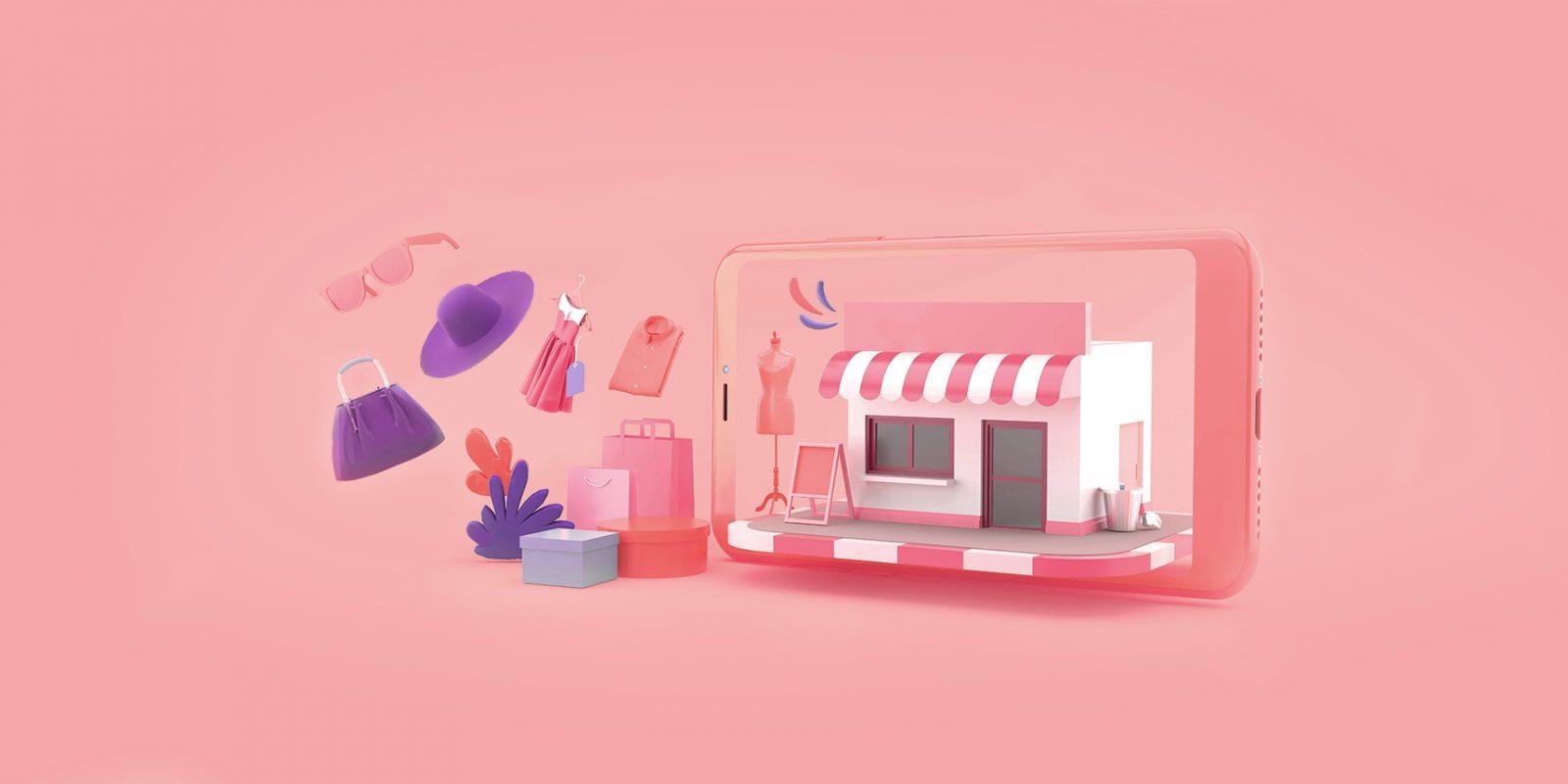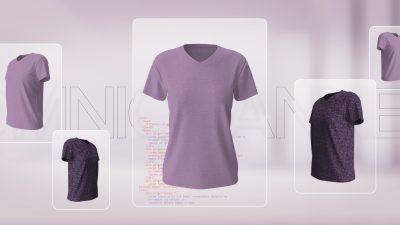Last Updated on: 2nd February 2024, 01:04 pm
At the beginning of the pandemic, some took their own approach to navigate uncertain times and others rose to the occasion, becoming what we refer to as “digital change leaders.” In Germany, they say that “retail is change” and in this article, we’re going to delve into how the Polish and DACH fashion market has changed since 2020, along with how industry leaders Breuninger and Zalando are paving the way to digital maturity, post-pandemic.
In this article you will learn about:
- The changes in the fashion industry in several European markets
- Industry leader strategies
- Branding campaigns and flexible approaches
Table of Contents:
- Changes in the EMEA Market
- Poland and the impact of COVID-19 on the fashion industry
- Digital change leaders
- Branding campaigns
- Flexible commerce
- RTB House – Technology changes everything
Changes in the EMEA Market
COVID-19 hit fashion in the DACH region to the tune of 11 billion Euros due to the closure of brick-and-mortar stores – but just how ready was the industry to deal with such seismic losses? As it turns out, necessity is actually the mother of invention, and with more consumers now naturally moving online due to the changing trends, revenue in the e-commerce market in Germany is projected to reach US $195,4B in 2022.
It’s not just Germany that appears to be more than weathering the storm that has affected small and large retailers alike. Switzerland experienced an increase last year in e-commerce growth of 27.9% compared to 2019. And neighboring Austria saw an increase in its turnover by more than 50 percent. In fact, studies showed that 20% of all online purchases in Austria now happen via a mobile device.
As changes swept through the DACH market, observations were being drawn from other countries around the world, including Poland. But what was in store for a country with large numbers of consumers that favored a physical shopping experience?
Poland and the impact of COVID-19 on the fashion industry
Poles love fashion brands and a report on the Polish fashion industry and its importance for consumers stated that 81% of consumers visited a mall for fashion shopping in 2020 – but what would this mean going forward? According to the report, it paints a fairly bleak picture of how the coronavirus impacted the fashion industry:
- At least one month of lockdown was predicted to result in losses which the industry wouldn’t be able to make up for over 15–18 months
- Transferring the entire business (in value terms) to the e-commerce channel would not possible given that before the COVID-19 epidemic it represented approximately 10% of the industry’s total sales
- The uncertainty among Poles regarding employment and the economic situation would further reduce their willingness to make fashion purchases
This combined with a “moderate decline scenario” that may see cash gaps in the industry range from a best-case scenario of 10.9B PLN and worst-case of 32B PLN very much supports the statement of Professor Witold Orłowski, Chief Economic Advisor to PwC in Poland, who said:
“One of the industries particularly at risk is the clothing and fashion sector, there is no time to waste, we have to do everything to minimize losses and avoid negative economic consequences for the whole ecosystem.”
Digital change leaders
Industry leaders have one thing in common – the ability to understand customer behavior and use it to the best of their ability, utilizing the available marketing technologies to give new insights into customer behavior through invaluable data. This has been the difference in those that not only survived but thrived.
Zalando’s customer-centric approach
Founded in 2008 and originally working out of Berlin, Zalando now offers over 400,000 products with an astounding 28 million active customers. When it comes to the fashion industry, they’ve been at the forefront of striving to offer more. Their refreshing approach to change – “when our customers change, we change ” – has propelled their experience in understanding that expectations are higher and more complex than ever before, all of which can be seen through Zalando’s new and innovative approaches.
Their tailored customer-centric services included the introduction of a 100-day return policy, as well as a premium online service for which customers can get individual style advice, exclusive offers, and a personalized approach through their Algorithmic Fashion Companion, which uses machine learning to create individual outfits.
By continuing to invest in innovation and to build on what they can offer their customers through an omni-channel approach to business, Zalando is targeting a gross merchandise value of 30B Euros by 2025.
Breuninger
What describes adaptation and change better than a company founded in 1881 and is now one of the leading multi-channel stores in Europe? Breuninger seem to have found the perfect blend in setting high standards in fashion, beauty, and lifestyle for over 140 years and their online store is now one of the most successful premium luxury stores, attracting 3.08 million monthly unique visitors (BREUNINGER.COM – Website Analytics and Alternative Sites (mysite.info).
Breuninger prides itself on offering a one-of-a-kind shopping experience through their online and brick-and-mortar stores which include:
- Click & Collect options
- Online bookings
- In-store ordering services
- Shuttle Services connecting customers with their store locations
A recent native advertising campaign undertaken by Outbrain – on behalf of Breuninger – using their Fully Automatic Conversion Bid Strategy just goes to show that they have no plans of slowing down. Once again proving that embracing data is the way of driving innovation in times of change.
With the DACH market well-served by Breuninger’s passion for fashion, beauty, and lifestyle, they recently expanded into Poland which was another fundamental step towards their ambitious plans for growth and internationalization. And from what we now know, companies need to immediately adjust to trends to maintain their competitive position in the fashion industry– so what and who are retail brands turning to?
Branding campaigns
The annual report from Divante drives home the importance of content marketing for online retailers. However, our concept of what makes great “content” can also be challenged. The lines between content marketing and advertising are now blurred. Retailers understand that even advertising needs to deliver a meaningful message (or get lost in all the online noise).
RTB House Video Streaming Ads harness this trend. They allow retailers to target top-of-the-funnel customers and show them aspirational content that raises brand awareness.
Flexible commerce
Brands need to get ready for the habits of future generations, as younger shoppers will account for 40% of all online sales in just a few years. However, boomers have also changed their habits in regards to shopping online due to the pandemic and stores must also take their needs into account. Further to these adaptations, retailers will also need to optimize for mobile and the challenges that will ensue when it comes to voice commerce, with 11% of consumers in Germany already using smart voice assistants at least once a week.
Online retailers need to be ready. The pandemic has changed not only how customers buy, but the expectations put forward by them to meet their innovative needs. The top stores of the future will be those that put flexibility into their online operations and continually leverage change with technology that can spot opportunities quicker than competitors.
RTB House – Technology changes everything
At RTB House, we are the key marketing partner for some of the largest fashion brands and our personalized solutions are ultra-flexible in customizing a campaign that matches our client’s business specificity – especially in times of change.
Our success stories reach far and wide with major brands around the world, such as DefShop, one of the largest European online shops for streetwear and lifestyle apparel, and OLX, a global classifieds platform with almost 260 million users and over 19 billion page views per month. You can check out the amazing results we yielded for both OLX and DefShop.
If you are interested in implementing technology that can help you stay flexible and lead in evolving times, we’re always available to talk about the Deep Learning MarTech solutions that RTB House offers. Just reach out and we’ll be happy to go into more detail.





